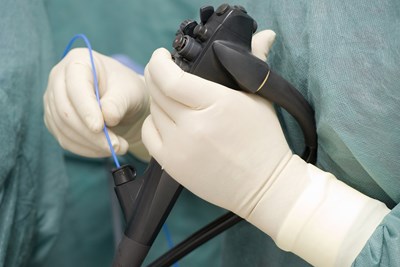An endoscope is a small length of tubing that has a camera and light attached, which allows medical professionals to see inside the body on a monitor. Although endoscopies are used for a variety of reasons, perhaps one of the least startling of its kind is the upper endoscopy, or gastrointestinal upper endoscopy. In upper endoscopy, the endoscope is sent into the body through the mouth and down the throat, allowing doctors to examine the esophagus, stomach, and small intestine (specifically the beginning of it, called the duodenum).
Upper Endoscopy Uses
When certain symptoms arise, they don’t always have an easy answer. Patients having difficulty swallowing, abdominal pain, abdominal bleeding, nausea, and/or vomiting may benefit from this procedure. It allows a thorough examination without the need for surgery and is more interactive and easily viewable than magnetic resonance imaging (MRI). In tandem with other procedures, such as ultrasound, more effective imaging can be achieved of abdominal organs that are difficult to get close to.
With upper endoscopy, a doctor can evaluate the state of internal things and make a more accurate diagnosis than by going strictly off symptoms. If a biopsy is necessary, this can also be accomplished by removing a small piece of tissue, which is then sent up the endoscope to be examined for disease like cancer or anemia. As additional medical advances are made, endoscopy becomes more and more effective; it can even be used to detect precursors to cancer.
Additionally, certain treatments can be accomplished through endoscopy. If a blood vessel has opened, causing internal bleeding, the area can be cauterized with the endoscope; heat is applied to seal the vessel. If the esophagus is too narrow, thus causing problems swallowing, it can be dilated with the use of an endoscope. Medication and other necessary devices can also be inserted or applied. Polyps, or small growths, sometimes form in this region, and they can be removed, similarly to the manner the biopsy is performed. Foreign objects that wind up in the upper part of the digestive tract can also be removed—if something is swallowed it may be removed before it causes further damage while making its way through the colon and other intestines.
Upper Endoscopy Procedure
It is very important to fast before the procedure to ensure the stomach is empty. This means absolutely no eating or drinking for four to eight hours beforehand. The doctor should be informed of any medications the patient is taking, as well as any diseases or conditions present.
During the procedure, the patient is laid on their side, sedated, and then a local anesthetic is sprayed into the mouth to numb and relax the area. A mouth guard may be necessary. Once the endoscope is inserted, no talking is allowed. Air pressure may be used to make it easier for the doctor to see inside. Once the procedure is finished, the patient will be given time to recover before going home the same day. Rest is recommended for the rest of the day, and some bloating, gas, and throat discomfort is to be expected, but it shouldn't be extreme or lengthy.
Upper Endoscopy Risks
The risks of upper endoscopy are very low. The patient is usually sedated, but not anesthetized, with the exception of certain cases, which means the risks of anesthesia are not present. Although there are occasional reactions to sedatives, these are rare. It may, however, take some time for the sedative to wear off completely, so the patient should not drive or perform dangerous or complicated tasks for at least twenty four hours. There is, however, a lot risk of infection, bleeding, and even tearing of some part of the area, which may require surgery to repair. Vomiting, fever, abdominal pain, bloody stool, chest pain, or difficulty breathing are all signs to call a doctor immediately.



